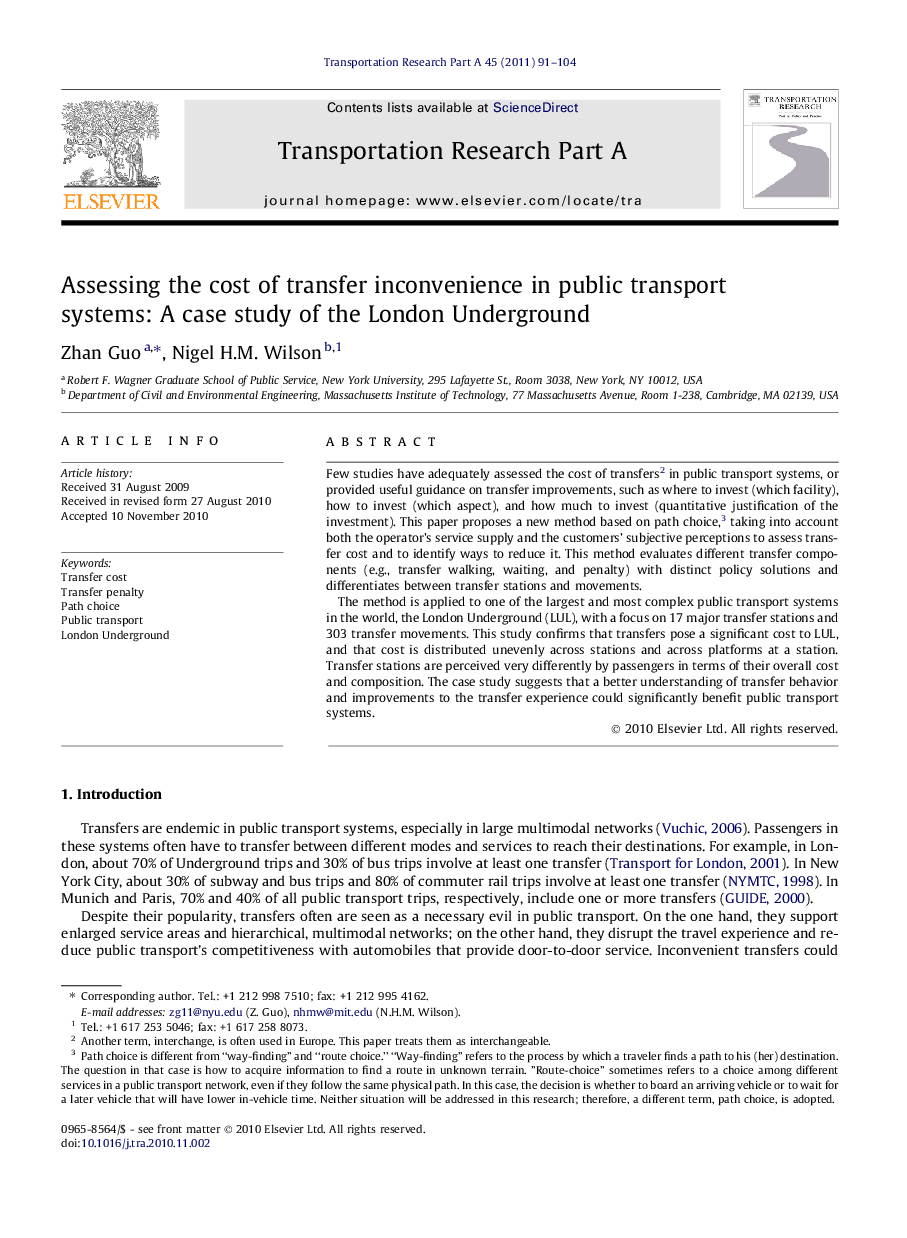| Article ID | Journal | Published Year | Pages | File Type |
|---|---|---|---|---|
| 310493 | Transportation Research Part A: Policy and Practice | 2011 | 14 Pages |
Few studies have adequately assessed the cost of transfers2 in public transport systems, or provided useful guidance on transfer improvements, such as where to invest (which facility), how to invest (which aspect), and how much to invest (quantitative justification of the investment). This paper proposes a new method based on path choice,3 taking into account both the operator’s service supply and the customers’ subjective perceptions to assess transfer cost and to identify ways to reduce it. This method evaluates different transfer components (e.g., transfer walking, waiting, and penalty) with distinct policy solutions and differentiates between transfer stations and movements.The method is applied to one of the largest and most complex public transport systems in the world, the London Underground (LUL), with a focus on 17 major transfer stations and 303 transfer movements. This study confirms that transfers pose a significant cost to LUL, and that cost is distributed unevenly across stations and across platforms at a station. Transfer stations are perceived very differently by passengers in terms of their overall cost and composition. The case study suggests that a better understanding of transfer behavior and improvements to the transfer experience could significantly benefit public transport systems.
Research highlights► Transfer is largely overlooked in public transport operation and planning. ► Few assessment tools exist to guide transfer-related improvements. ► Path choice modeling provides a useful tool to assess the transfer cost. ► Transfers cost is tremendous to LUL, and varies across stations and platforms. ► Improving transfer experience could significantly benefit public transport systems.
